To grow pumpkins, choose a sunny location with well-draining soil and ample space for the vines to spread. Plant the seeds about 1 inch deep and water regularly. Once the plants begin to grow, add fertilizer and mulch to retain moisture. Harvest the pumpkins when they are fully mature and the vines have died back.
Welcome to the wonderful world of pumpkin growing! If you’ve ever dreamed of cultivating your very own pumpkins, be it for Halloween jack-o’-lanterns or mouthwatering pumpkin pies, this to-the-point step-by-step guide is here to make that dream a reality.
With expert tips and insightful advice on the entire process, from seed selection to harvest time, we’ve got you covered. Join us as we embark on an exciting journey towards bountiful pumpkin yields.
Get ready to roll up your sleeves and learn how pumpkins grow like a pro!
When To Plant Pumpkins?
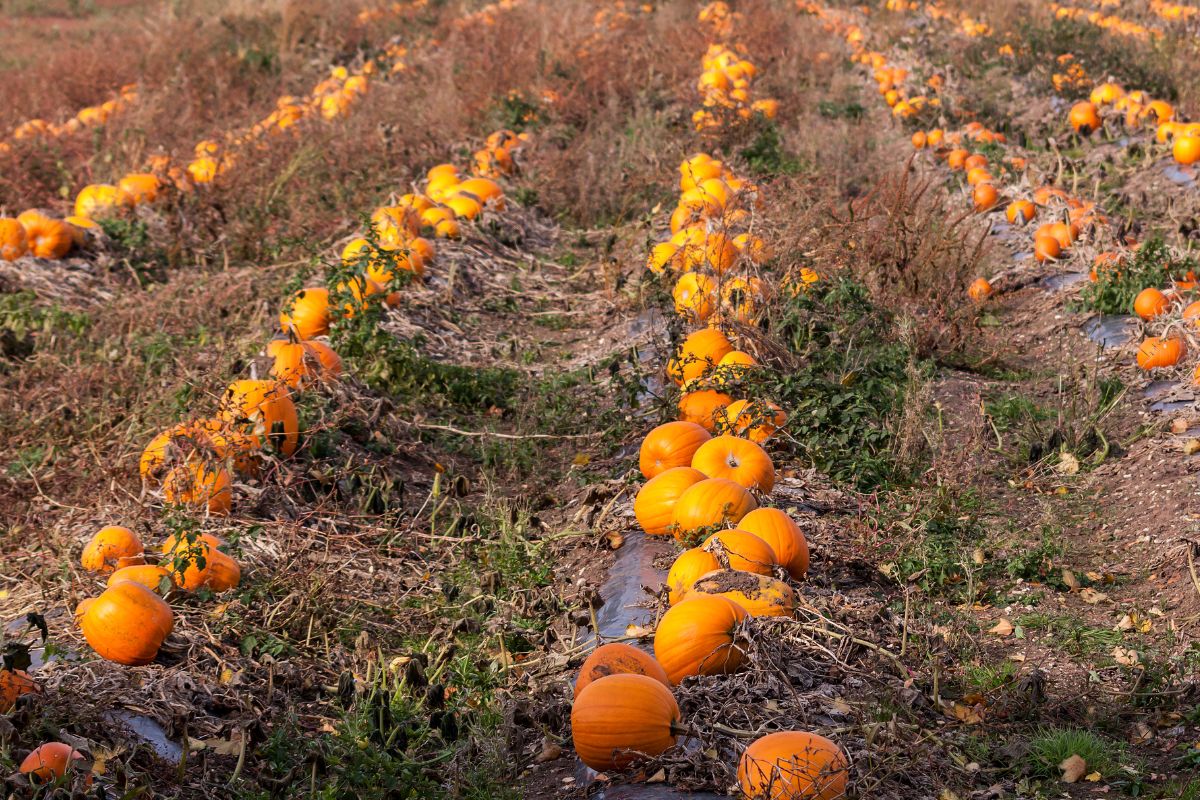
Timing is crucial when it comes to planting pumpkins. Ideally, you should sow your pumpkin seeds in late spring or early summer, when the soil has sufficiently warmed up and there’s no risk of frost. This will give the plants ample time during the long growing season to establish themselves and produce plump, ripe fruit before cooler weather arrives.
Keep an eye on the weather in your area because it plays a big role in figuring out when the best time to plant pumpkins is. In colder regions with shorter growing seasons, you can start seeds indoors approximately 3-4 weeks before your last expected frost date.
Transplant seedlings outdoors once all risks of frost have passed and nighttime temperatures consistently stay above 50°F (10°C). This approach ensures that plants have a head start and enough time to mature their fruits within the available growing season.
Step-by-step Instructions For Growing Pumpkin
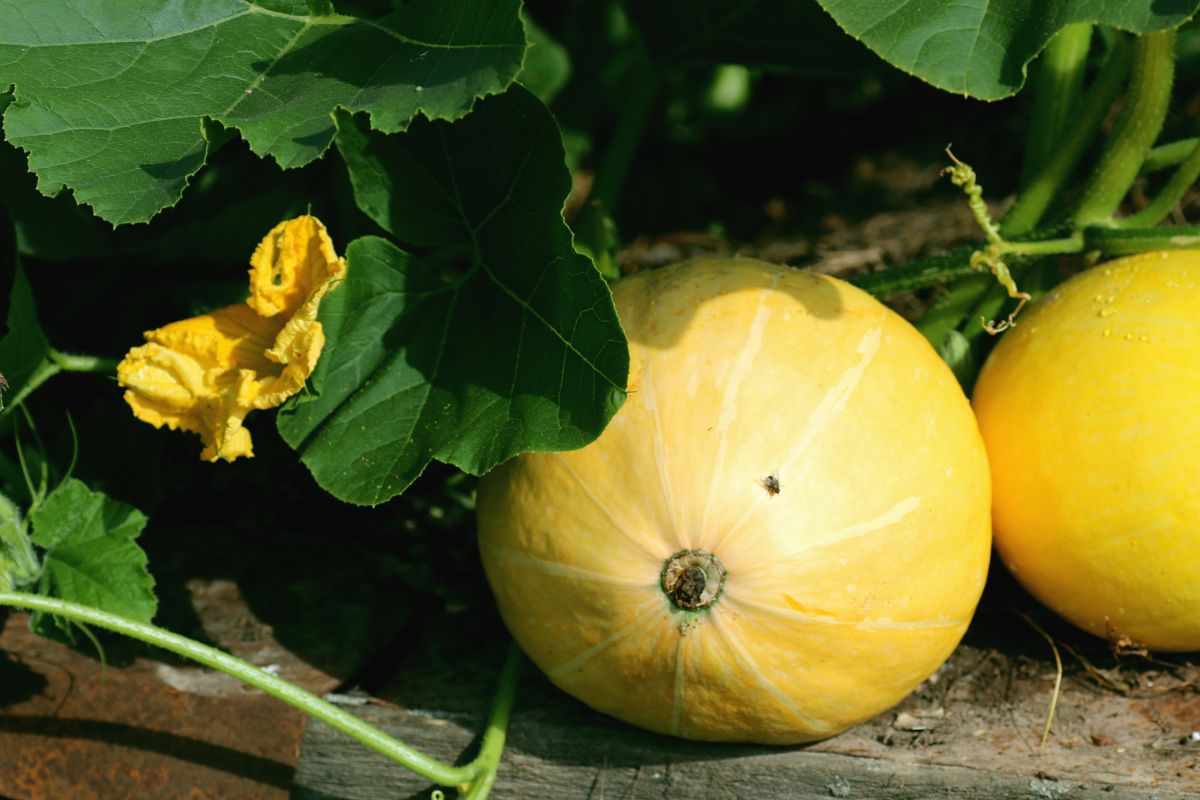
Step-by-step instructions for growing pumpkins include choosing the right seeds, preparing the soil, planting the seeds, watering and caring for your plants until they are ready, then picking and storing your pumpkins. Keep reading to learn all about growing your own delicious pumpkins!
Step 1: Choose the Right Pumpkin Seeds
Selecting the appropriate pumpkin seeds is crucial for a successful harvest. There are many different kinds of pumpkins, and each one has its own size, color, and taste. Check the seed packet details to ensure that your choice suits your intended purpose, whether it’s for carving jack-o’-lanterns or making delicious pumpkin pies.
When choosing seeds, also consider factors such as growing season length and space requirements. Different pumpkin varieties have varying days to maturity and need ample space to grow their sprawling vines. Be sure to select a type that matches both your climate conditions and garden area in order for your pumpkins to thrive optimally.
Step 2: Preparing For Planting
Once you have chosen the right pumpkin seeds, the next step is to prepare for planting. Here are some tips on how to do that:
- Choose a suitable location: Pumpkins need plenty of sunlight to grow well, so choose a spot in your garden that gets at least 6 hours of sun per day.
- Improve the soil quality: Before planting pumpkins, it’s important to ensure that your soil is healthy and nutrient-rich. You can achieve this by adding compost, fertilizer, or organic matter to improve its quality.
- Check the soil pH: A neutral soil with a pH between 6.0 and 6.5 is ideal for growing pumpkins. You can test the pH level of your soil using a simple test kit from a local nursery or garden center.
By following these steps, you’ll be well on your way to growing healthy and abundant pumpkins in your own backyard!
Step 3: Planting The Seeds
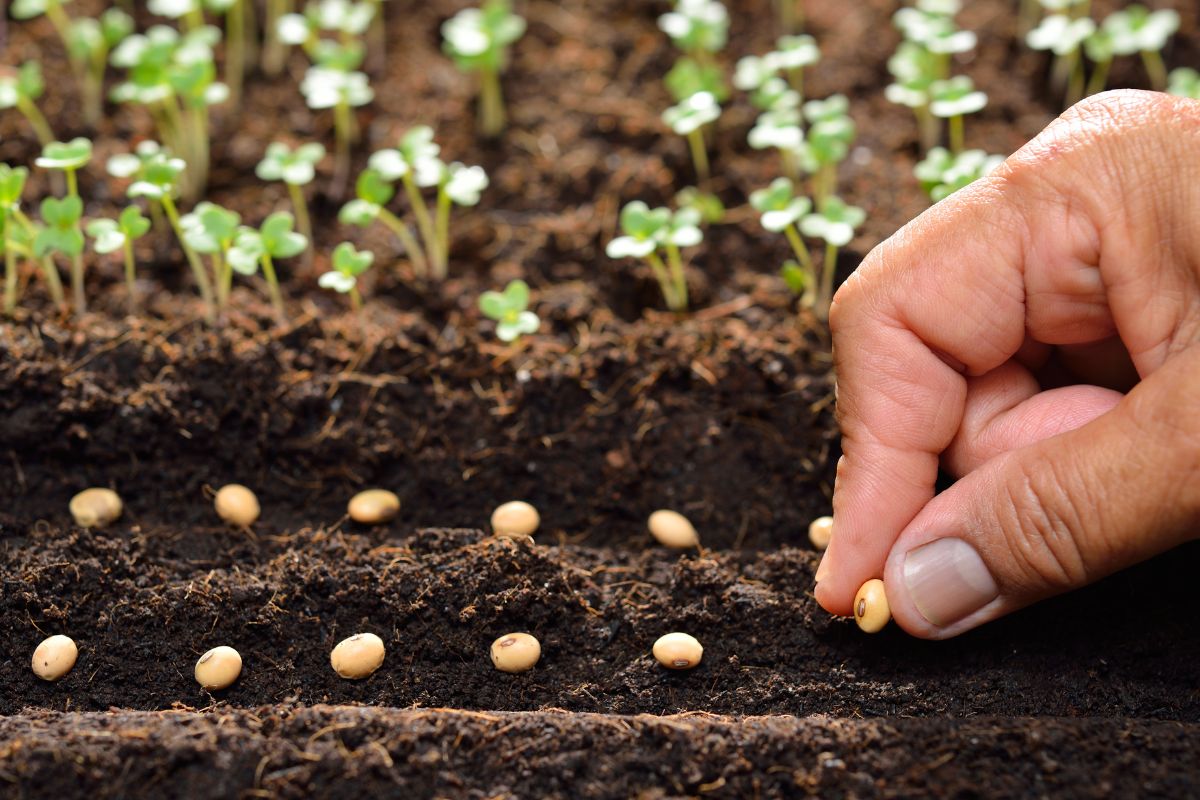
Now that you have prepared the soil, it’s time to plant your pumpkin seeds. You can either sow them directly into the ground or start them indoors, depending on your climate and growing season. If starting indoors, use peat pots or containers with ample drainage holes and keep them near a sunny window.
When planting outdoors, make sure to space the seeds about 6 to 12 inches apart in rows or in hills with four or five seeds per hill. The goal is to have one healthy plant per every 18–36 inches of space.
Cover the seeds with about an inch of soil and water well immediately after planting. Keep the soil moist but not too wet during germination, which usually takes 7 to 10 days depending on temperature and moisture levels.
Step 4: Water And Care For Your Pumpkin Plants
It’s important to water and care for your pumpkin plants if you want them to grow well and produce a lot of pumpkins.
Here are some tips:
- Watering: Pumpkins require plenty of water daily due to their rapid growth. It’s essential to ensure the soil is moist and never dries out completely, especially when flowers and fruits are forming on the vines. Using a drip system or soaker hose to water the soil at the base of vines is recommended, as it prevents diseases such as mildew from forming.
- Fertilizing: Applying fertilizer regularly during the growing season helps pumpkins thrive. Use organic methods such as compost, aged manure, or fish emulsion for optimal results.
- Pruning: Cut off any leaves that are dead or sick to help the plant grow well and stop fungal diseases from spreading.
- Pollination: Pumpkin plants need insects like bees for pollination; if these insects aren’t present in your garden, you may need to hand-pollinate using a small brush.
Remember that pumpkin plants can’t grow or produce as well if they get too much water. Proper care and watering are important for growing and harvesting pumpkins.
Step 5: Pick and Store Your Pumpkins
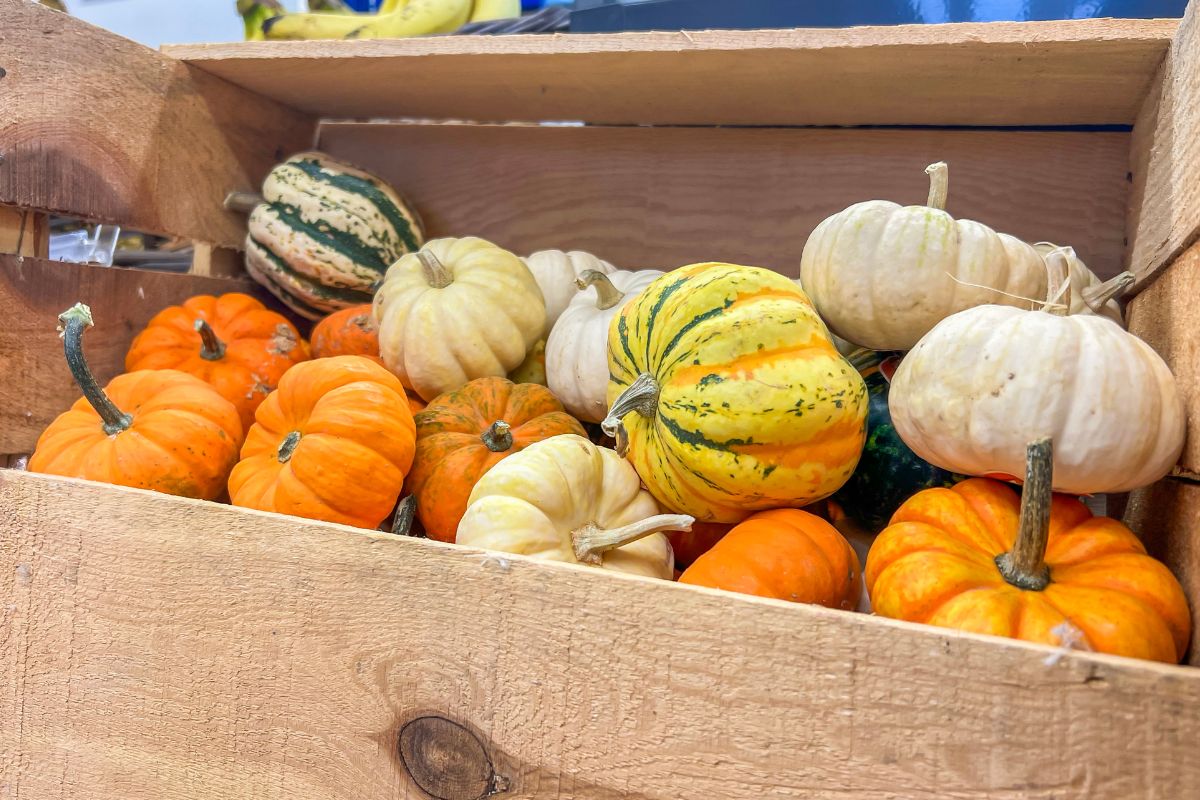
Harvesting pumpkins is an exciting moment for gardeners. It’s important to wait until the pumpkin is fully grown and its skin is tough. When harvesting, carefully cut the stem, leaving a few inches attached to the fruit. This will allow your pumpkin to last longer.
After harvesting, it’s crucial to cure your pumpkins in a warm, dry place for about 10 days before storing them. This helps harden the skin and prevent rotting. Once cured, store your pumpkins in a cool, dry place with good ventilation.
With proper storage techniques, you can keep your pumpkins fresh for several months!
How Long Does It Take Pumpkins to Grow?
The time it takes to grow pumpkins varies depending on the variety and can be found on the seed packet. Here are some estimated cooking times for some common pumpkin varieties:
- Small decorative pumpkins can take anywhere from 75 to 100 days to mature.
- Jack-o-lantern pumpkins take around 100 days to mature.
- Giant pumpkins can take up to 120 days or more to mature.
- Pie pumpkins generally take around 85-110 days, depending on the variety.
It’s important to check the seed packet and estimate your growing season before planting your pumpkin seeds. Keep in mind that these are only estimates, and that weather conditions can have an impact on growth rate. Watching for signs of readiness, like a deep orange color and a hard rind, is key when harvesting your pumpkins!
6 Proven Tips For Growing Pumpkin
Growing pumpkins can be a fun and rewarding experience for gardeners. To ensure the best results, here are some helpful tips to follow:
- Choose a sunny spot: Pumpkins thrive in full sunlight, so choose an area that receives at least 6 hours of direct sunlight per day.
- Proper soil preparation: Before planting pumpkin seeds, make sure the soil is properly prepared with compost or organic matter to promote healthy growth.
- Plant seeds at the right depth: Pumpkin seeds should be sown 1 inch deep in warm soil, ensuring they have enough space to grow.
- Water regularly: Pumpkins need about an inch of water per week, so make sure they are well hydrated throughout their growing season.
- Provide support: As pumpkin vines can grow up to 25 feet long, give them room to stretch out and provide support such as trellises or stakes if necessary.
- Harvest at the right time: Depending on the variety grown, pumpkins can take between 80-120 days to mature fully. Once the stem starts to dry and turn brown and the fruit sounds hollow when tapped, it’s time to harvest!
By following these simple tips along with regular care and attention, gardeners can grow healthy and delicious pumpkins in their own backyard!
Common Mistakes To Avoid When Growing Pumpkins
Pumpkin growing can be fun and rewarding for gardeners, but to get a good harvest, it’s important to avoid these common mistakes:
- Underwatering: Pumpkins require plenty of water daily due to their rapid growth, so make sure to give them at least an inch of water per week.
- Planting in close proximity: Pumpkins need plenty of space for their vines to grow, so avoid planting them too close together.
- Not pruning the vines: Pruning excess vines helps the plant put more energy into growing pumpkins, rather than spreading out unnecessary foliage.
- Neglecting pest control: Common pests that can damage pumpkin plants include squash bugs and cucumber beetles. Be sure to keep them away or use natural pest control methods if necessary.
- Not waiting for full maturity before harvesting: It’s important to wait until your pumpkins are fully mature before harvesting them to ensure they keep well.
- Using pesticides that harm pollinators: Encouraging pollinators such as bees is essential for successful pumpkin growing, so avoid using pesticides that could harm them.
By avoiding these common mistakes and following proper care techniques, you can enjoy a bountiful harvest of healthy and delicious pumpkins in your garden!
Final Thoughts
Growing pumpkins can be an exciting and rewarding experience for any gardener. By following our step-by-step guide, you can ensure that your pumpkin plants will grow healthy and strong, producing plump and vibrant fruits in time for the harvest season.
Don’t forget to give your plants enough space, nutrients, and water, and if necessary, pollinate them by hand. With patience and care, you’ll soon have a bountiful harvest of delicious pumpkins that are perfect for pies or Halloween decorations!
So go ahead and give it a try – we guarantee it will be a fun adventure from start to finish!


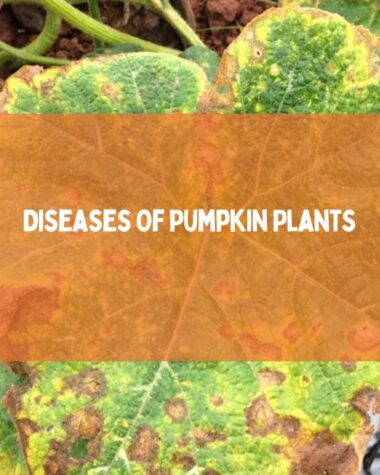
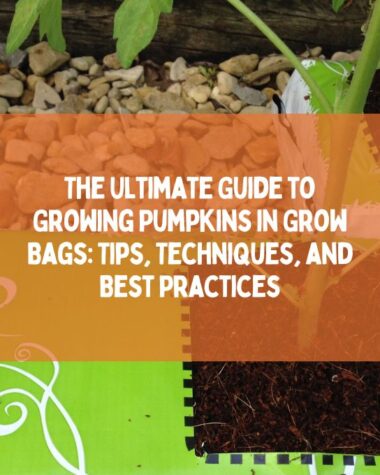
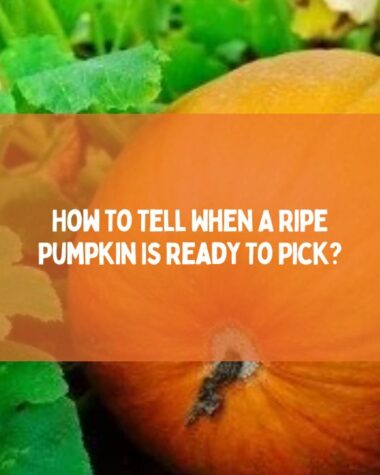
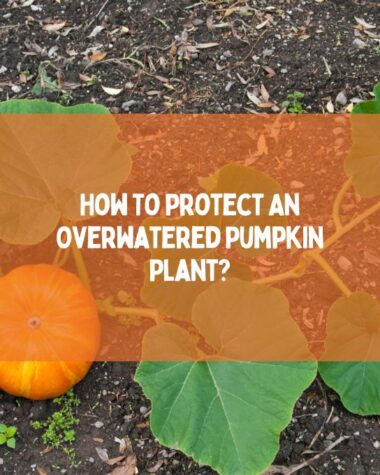

1 comment
Hi, this is a comment.
To get started with moderating, editing, and deleting comments, please visit the Comments screen in the dashboard.
Commenter avatars come from Gravatar.